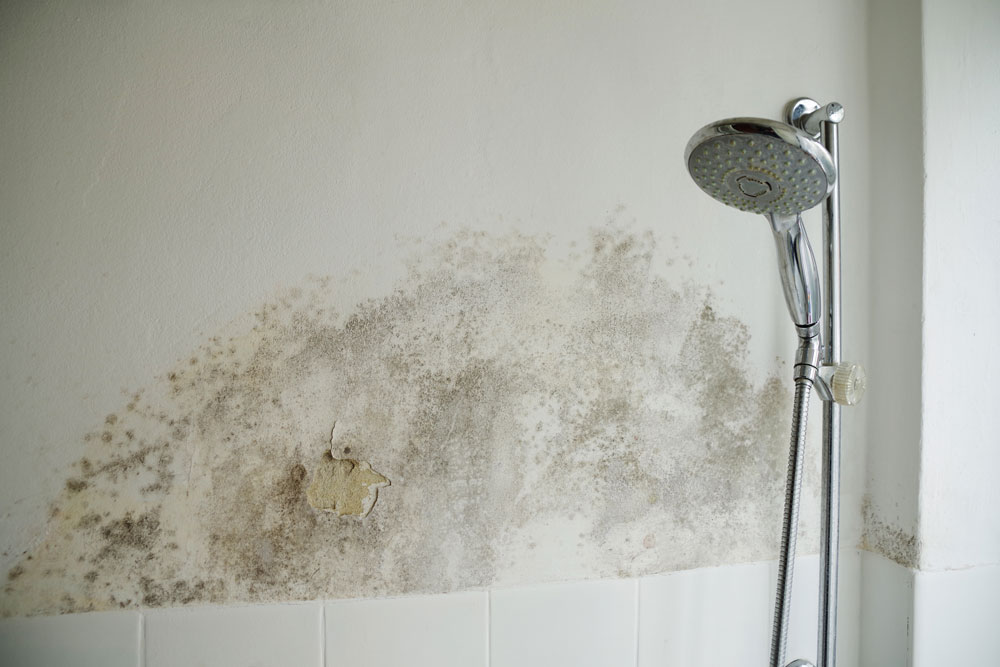What Causes Mould In Bathrooms?
 CONTENTS
CONTENTS
- What causes mould in bathrooms?
- The dangers of mould
- How to get rid of mould in bathrooms
- The best ways to prevent mould growth
- Get in touch today
Your bathroom is the most prone room to mould in your home. You must be wary of the first signs of growth, or it could take over your bathroom, put your health at risk, and result in expensive repairs and replacements.
Our fully trained mould cleaners have many years of experience tackling mould in bathrooms. Our mould remediation services consist of a nine-stage mould removal process that can eliminate all the fungus from your property, including mould in the air.
Keep reading to find out what is causing mould to grow in your bathroom and how to get rid of it for good.
What causes mould in bathrooms?
Mould grows in environments that contain excess moisture. It is usually caused by high humidity, condensation, and damp. Bathrooms contain the damp and humid conditions mould thrives in.
Another major cause of bathroom mould is inadequate ventilation. When hot water from showers or baths turns into steam, it increases the room's humidity levels. Without proper extraction, this moisture settles on surfaces and provides a fertile breeding ground for mould spores.
Leaky pipes are another culprit. Hidden behind walls or under floors, they create constant dampness where mould loves to grow. Floods and leaks from faulty plumbing can also make surfaces damp.
One of the places you can often find mould growing in the bathroom is in grout and sealant. Grout traps moisture, providing it with the damp conditions it needs to grow, and gaps can form behind sealant, allowing mould to grow behind it and spread across the silicone.
Even damp towels and bath mats being left out after a shower or bath can help make the conditions more conducive to mould growth.
The dangers of mould
Mould poses a real risk to both your property and health. Mould thrives on organic material, including wood and plasterboard. Over time, the constant presence of mould can degrade and weaken these structures, leading to costly repairs or even structural failure.
Exposure to mould is also harmful and can result in allergic reactions as well as respiratory issues like coughing, wheezing, nasal congestion, or throat irritation. People with allergies, respiratory conditions, and weakened immune systems may experience more severe reactions.
Some types of mould produce mycotoxins, toxic compounds which can result in more serious health problems like sick building syndrome and fatal asthma attacks. Many assume all forms of black mould are toxic, but only a few occasionally release the harmful chemicals. You can find out more about toxic mould here.
How to get rid of mould in bathrooms
Cleaning mould can be a tricky, dangerous task. Removing black mould in the bathroom will bring you in close contact with it, and will therefore require you to wear full personal protective equipment when cleaning the affected area.
DIY mould removal methods are also usually ineffective and can cause more damage. Scrubbing silicone sealant, for example, can damage it, allowing more water and therefore mould to get behind it. Should you fail to get rid of all traces of the mould, it will simply grow back, too.
You should always bring in professional cleaners for mould removal. They will have the specialist equipment and protective gear to safely and thoroughly eliminate all the mould in your property. This includes removing mould from delicate surfaces, like sealant.
The best ways to prevent mould growth
There are lots of steps you can take to stop mould growing in your bathroom.
Firstly, good ventilation plays a crucial role. Make sure you are using an extractor fan or open the window after showers and baths to let out the steam and humid air.
You should also keep surfaces dry. Wipe down any wet areas after use like tiles, shower screens, and windowsills.
Don't forget to close the door when taking hot showers or baths so steam does not escape into other parts of the house.
Clean regularly to get rid of any dust, dirt, and dead bugs that mould can feed off when it starts to grow.
It is recommended you apply anti-mould paint to walls and ceilings, too. Anti-mould paint contains biocides that kill mould and may even contain chemicals that prevent moisture from gathering.
Use anti-mould sealant, as well, to stop hard-to-remove mould from growing on the silicone.
Get in touch today
We offer a lifetime guarantee* with every mould removal service so if the mould comes back, our technicians will return to site for free to remediate it.
Book your mould cleaning by calling our friendly team on 0208 066 0360 or sending an email to enquiries@icecleaning.co.uk. Our team will be happy to schedule your free site survey and give you a no-obligation quote.
*subject to advisories

Speak with me today,
I’m here to help
By asking you a few questions either via phone or email I can immediately provide a realistic estimation of the cost.
You’re in good company. We’ve cleaned for the following commercial clients… View all

Why choose us?
- Cater to a wide variety of cleaning situations
- Nationwide coverage, available 24/7
- Cater to commercial and domestic clients
- Free survey provided prior to quotation
- Emergency response team
- Offer a bespoke service designed to suit all your needs
- All technicians hold professional health and safety qualifications, including BICSc, IOSH, Dewpoint Professional & Safe Contractor
We’re fully accredited
We place best practise, professional expertise and health and safety at the core of our business. We’re fully compliant with all legal obligations. You can view a list of our accreditations below, or visit our Health & Safety page for more information.











-RGB-small.1707319151.jpg)




















